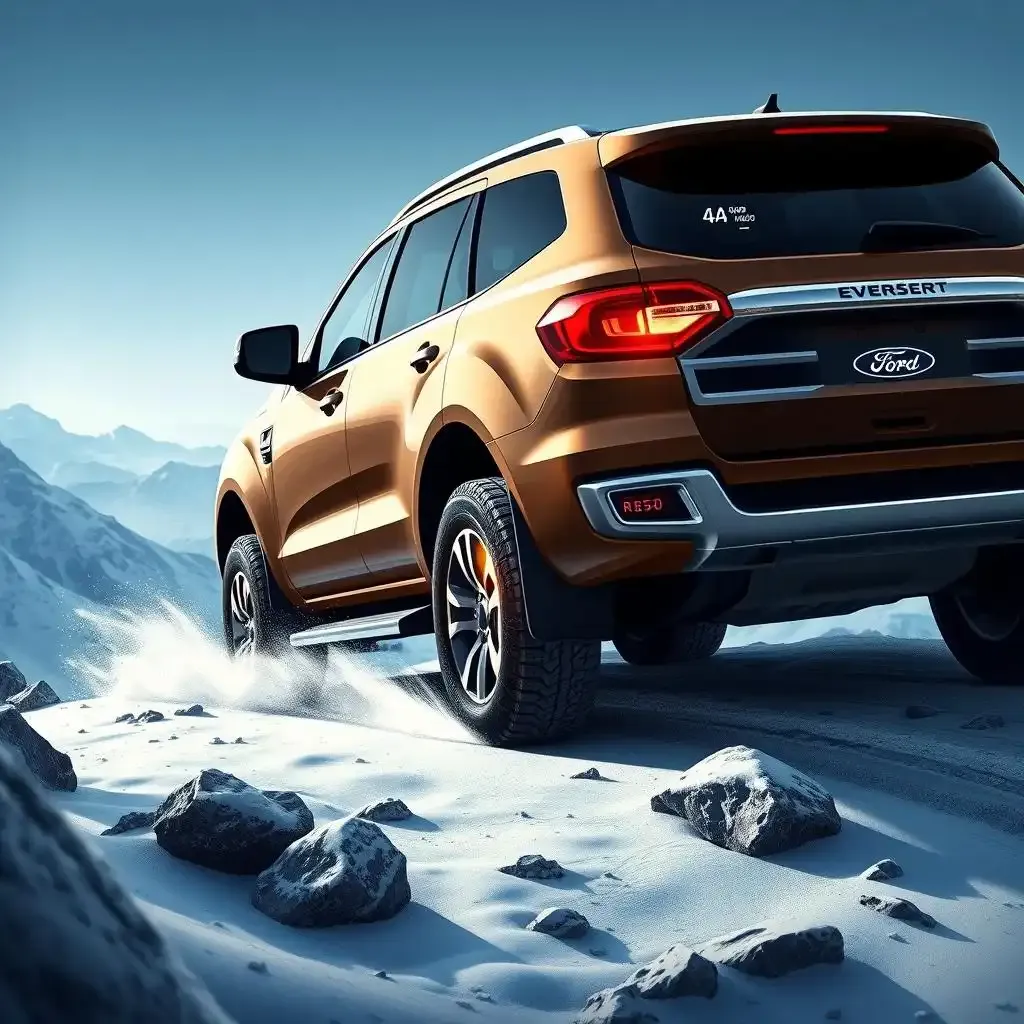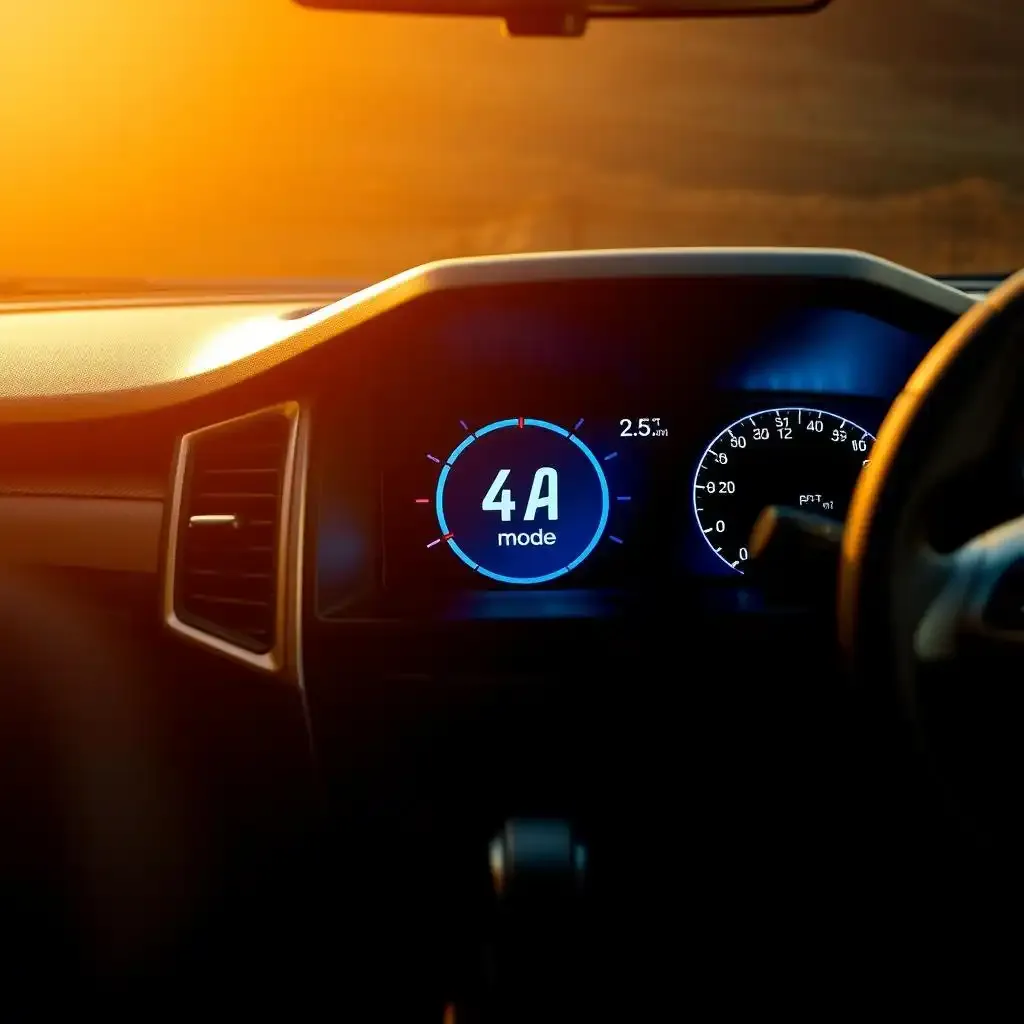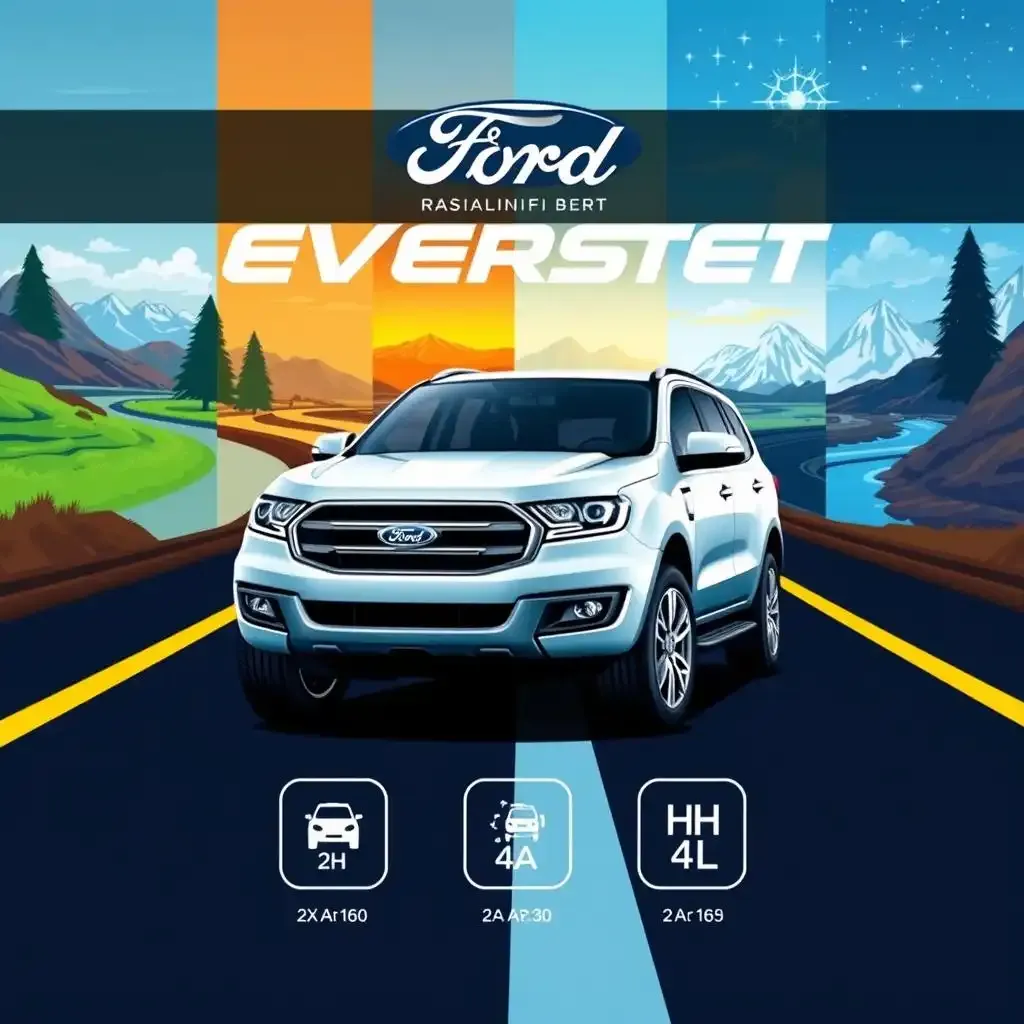Table of Contents
The Ford Everest is a formidable SUV, known for its robust build and impressive off-road capabilities. A key feature that often goes unnoticed, yet is crucial for its performance, is the 4A mode. This automatic four-wheel drive setting is designed to handle a variety of driving conditions, from smooth highways to challenging terrains. This article will explore the specifics of the 4A mode in the Ford Everest, explaining how it functions, its benefits, and when to use it compared to other driving modes. Whether you are a seasoned off-roader or a daily commuter, understanding the 4A mode will enable you to maximize the potential of your 4a ford everest. Get ready to learn how this advanced system can enhance your driving experience, providing a seamless transition between different road surfaces and conditions. We will take a closer look at how this mode works, what it offers, and how it stacks up against other 4WD options. By the end of this read, you will have a solid grasp of how to leverage the 4A mode in your Ford Everest for optimal performance.
Understanding the 4A Mode in Your Ford Everest

Understanding The 4a Mode In Your Ford Everest
What Exactly Is 4A?
Okay, so imagine your Ford Everest is like a superhero with different ability modes. One of those modes is called 4A, and it stands for 4-wheel drive automatic. It’s like having a smart assistant for your car. Instead of you constantly switching between two-wheel drive and four-wheel drive, the car decides for you when it needs that extra grip. It's pretty neat. Think of it like this: when you're walking on a dry sidewalk, you don't need to use all your muscles, but if you hit an icy patch, you brace yourself to stay upright. The 4A mode is similar, it automatically sends strength to all four wheels when it senses the need, like when you are on slippery surfaces or light off-roading.
How Does it Work?
Now, you might be wondering, "How does it know?" Well, the 4A system is like a super-sensitive detective. It's constantly monitoring the road conditions and how your tires are gripping the surface. If it notices that the wheels are slipping a bit, it instantly sends strength to all four wheels to help you gain traction, it is like a helping hand. When the road is dry and smooth, the system relaxes, and it mostly uses two-wheel drive to save on fuel. It's a smooth transition, so you might not even notice it happening. It's like having a set of eyes that watches the road for you. It's always there, making tiny adjustments to keep you safe and comfortable.
Mode | Description | Use Case |
|---|---|---|
2H | Two-wheel drive | Normal road driving |
4A | Automatic four-wheel drive | Varying conditions, on and off-road |
4H | Four-wheel drive high range | Moderate off-road conditions |
4L | Four-wheel drive low range | Tough off-road conditions |
4A Ford Everest: How It Works in RealWorld Conditions
4A on the Road: Smooth Sailing or Slippery Slopes?
Okay, so you're cruising down the highway in your 4A Ford Everest. It's a sunny day, the road is dry, and everything feels normal. In this situation, the 4A mode is like a chilled-out buddy. It's mostly using the two-wheel drive to save fuel, just like you'd choose to walk instead of run when you're just strolling along. But here's the cool part: let's say you hit a patch of unexpected rain, or maybe some loose gravel on the side of the road. Suddenly, that chilled-out buddy turns into a superhero! The 4A system senses the change, instantly shifting ability to all four wheels to give you extra grip. You might not even feel it happen, just a smooth, seamless transition that keeps you steady and in control. It's like having a guardian angel watching the road for you.
4A Off the Beaten Path: Tackling the Tough Stuff
Now, let's imagine you're not on a smooth highway anymore, but instead, you're trying a bit of light off-roading. Maybe you're on a dirt track, or even a sandy beach. The 4A mode is still doing its thing. It's constantly adjusting capability to each wheel, making sure you have the best possible grip. It's like having a team of tiny robots under your car, all working together to keep you moving forward. The system isn't afraid to send more ability to the wheels that need it most, helping you guide through different terrains. It's not the most powerful setting for hardcore off-roading; it's more of a jack-of-all-trades mode. It's there to give you extra traction and stability without you having to do anything, so you can focus on enjoying the drive.
Condition | 4A Mode Behavior | Driver Experience |
|---|---|---|
Dry Highway | Mostly 2WD, minimal 4WD engagement | Smooth, fuel-efficient driving |
Rainy Road | Automatic 4WD engagement | Enhanced grip, stable handling |
Gravel Road | Frequent 4WD adjustments | Improved traction, more control |
Light Off-Road | Dynamic capability distribution | Confident navigation |
Think of the 4A mode as your Ford Everest's intelligent assistant, always on the lookout for changing conditions. It's like having an extra set of hands ready to help you when you need it.
The Advantages of 4A: Fuel Efficiency and OnRoad Performance

The Advantages Of 4a Fuel Efficiency And Onroad Performance
Saving Fuel with 4A: It's Like a Smart Diet for Your Car
I've always thought of the 4A mode as a bit of a genius when it comes to fuel. It's not about being lazy; it’s about being smart. When you're cruising on a smooth road, it's like your Ford Everest decides, "Hey, we don't need to use all our muscles right now; let's save some energy!" And that's precisely what it does. It mostly uses the two-wheel drive, which means less effort for the engine, and guess what? Less fuel used. It's like when you're walking instead of running; you use less energy, right? The 4A mode is similar; it only kicks in the four-wheel drive when it really needs to, which is pretty cool. It’s not like those old cars that were always thirsty; this one knows how to sip fuel instead of gulping it.
Smooth Rides: 4A's On-Road Magic
Now, let's talk about how the 4A mode makes your rides feel. It's like having a personal masseuse for your car; it keeps everything smooth and comfortable. Because the system is always watching for changes in the road, it can adjust really fast. So, if you hit a slippery patch, the 4A mode jumps into action. It sends the ability to all four wheels, so you don't feel like you're sliding around. It's not just about safety; it also makes the ride feel much smoother. You know when you're on a bumpy road, and you feel like you're bouncing all over the place? The 4A mode helps minimize that, giving you a steadier and more comfortable drive. It’s like having a magic carpet ride, but instead of a carpet, it’s your Ford Everest.
Advantage | How 4A Achieves It | Real-World Benefit |
|---|---|---|
Fuel Efficiency | Uses 2WD when possible | Less money spent on gas |
Smooth Ride | Adjusts traction as needed | More comfortable driving experience |
Stability | Distributes strength to all wheels | Enhanced safety on slippery roads |
4A vs. Other Modes: When to Choose Your 4A Ford Everest Settings

4a Vs Other Modes When To Choose Your 4a Ford Everest Settings
Okay, so we've talked a lot about how awesome the 4A mode is, but your Ford Everest has other tricks up its sleeve too! It’s like having different superpowers, and you need to know when to use each one. Think of it like choosing the right tool for a job. You wouldn't use a hammer to screw in a bolt, right? Well, the same goes for your car's driving modes. Let’s break down the other options and when you might want to use them instead of 4A.
First up, we have 2H. This is your standard two-wheel drive mode. It's like your car is just walking on its two back legs, saving energy and fuel. This is perfect for everyday driving on smooth, dry roads. It’s like when you're just strolling down the street, you don't need to engage all your muscles. Then, there's 4H, which is four-wheel drive high range. This mode is like your car putting on its hiking boots. It sends strength to all four wheels, giving you more grip for moderate off-roading, like bumpy dirt roads or gravel paths. It's a step up from 4A, giving you more capability when things get a little rougher. Finally, there's 4L, which is four-wheel drive low range. This is like your car transforming into a mountain goat. It's for the really tough stuff, like extreme off-roading, steep hills, or deep sand. It provides maximum capability and control, so you can tackle the most challenging conditions.
Mode | When to Use | Why to Use |
|---|---|---|
2H | Normal, dry roads | Fuel efficiency |
4A | Varying conditions, light off-road | Automatic traction control |
4H | Moderate off-road, slippery surfaces | Increased grip and capability |
4L | Extreme off-road, very tough conditions | Maximum ability and control |
So, when should you pick 4A over these other options? Well, I think of 4A as the Goldilocks mode. It's not too little, and it's not too much; it's just right for a wide range of conditions. It's your go-to mode for everyday driving, especially when the weather is unpredictable or you're driving on mixed surfaces. It's like a safety net that automatically kicks in when you need it. You don't have to be constantly thinking about switching modes; it does the thinking for you. But if you're planning a serious off-road exploration, then 4H or 4L might be better choices. It really comes down to what you're doing and what kind of terrain you're facing.
Wrapping Up: Mastering Your 4A Ford Everest
The 4A mode on your Ford Everest is more than just a setting; it is a key to unlocking the vehicle's full potential. It offers a blend of convenience and capability, adapting to varying road conditions without needing constant driver intervention. By understanding how the 4A mode works, its advantages in fuel efficiency, and when it is most appropriate to use, you can ensure a smoother, safer, and more enjoyable driving experience. The 4A setting provides a balanced approach, offering the security of four-wheel drive when needed, while maintaining efficiency on regular roads. This versatility makes the 4A mode a valuable asset for any Ford Everest owner. Whether you are navigating city streets or exploring off-road trails, the 4A mode stands as a testament to Ford’s commitment to innovation and performance. So, go ahead, familiarize yourself with this feature, and embrace the dynamic capabilities it brings to your driving adventures. It’s not just about having a four-wheel drive; it is about having the right four-wheel drive for the job.